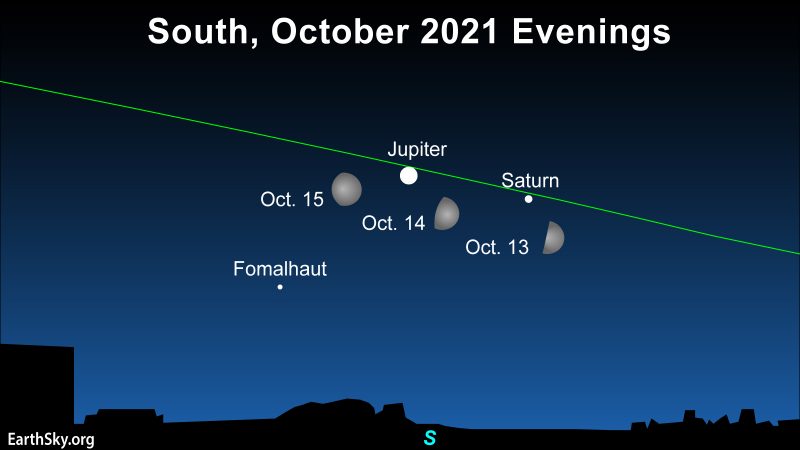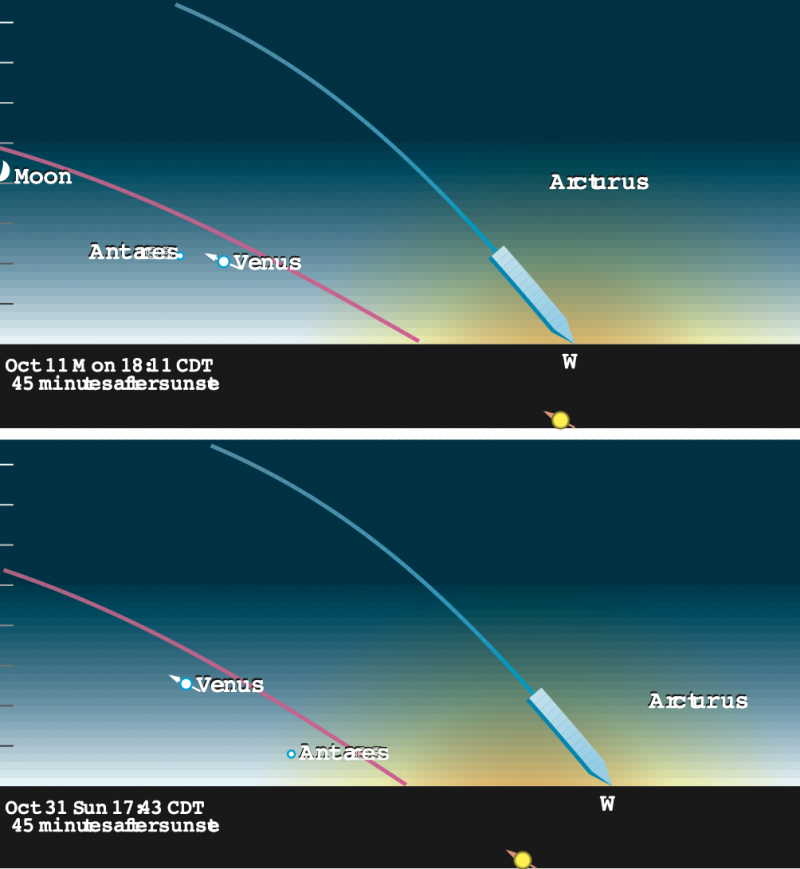
Moon, Jupiter, Saturn
On the nights of October 13 to 15, 2021, the waxing moon sweeps past bright Jupiter and fainter Saturn in the evening sky. Jupiter appears brighter than any star. Both it and Saturn are traveling on the ecliptic, or sun’s path, throughout the evening during October 2021. Saturn appears fainter and more golden in color than Jupiter. How to find Saturn? Extend your arm and make a fist. Saturn is the brightest “star” within one fist-width of Jupiter (to the right as seen from the Northern Hemisphere, and to the left from south on the globe). Saturn is brighter than the bright star Fomalhaut, also nearby.
Notice that Saturn and Jupiter, as nearby planets, both shine more steadily than Fomalhaut, which is about 25 light-years away.
And note that first quarter moon is October 12-13 (03:35 UTC on October 13). It’s a waxing gibbous moon that’ll pass 4 degrees south of Saturn on October 14 at about 07:00 UTC, and then pass 4 degrees south of Jupiter on October 15 at about 10:00 UTC.
Motions and cycles
Jupiter and Saturn appeared so close together in December 2020 that they made headlines around the world. Astronomers called their meeting a great conjunction. Maybe you saw them then?
Throughout 2021, Jupiter and Saturn have been separating. Jupiter has been moving eastward with respect to Saturn. It’s shifting away from Saturn on our sky’s dome as it pursues its smaller orbit around the sun (12 years for one orbit, in contrast to Saturn’s 29 years).
Still, as seen from Earth, these two worlds are noticeably close in 2021. That’s especially true because Jupiter is brighter than all the stars (and brighter than Saturn). And so you can notice Jupiter easily along the ecliptic, or sun’s path, throughout the evening, during October 2021. Watch for them.

Bottom line: Moon, Jupiter, Saturn! And the star Fomalhaut. They’re all wonderful to see on the nights of October 13 to 15, 2021 (and throughout October 2021) as viewed from nearly all of Earth.











